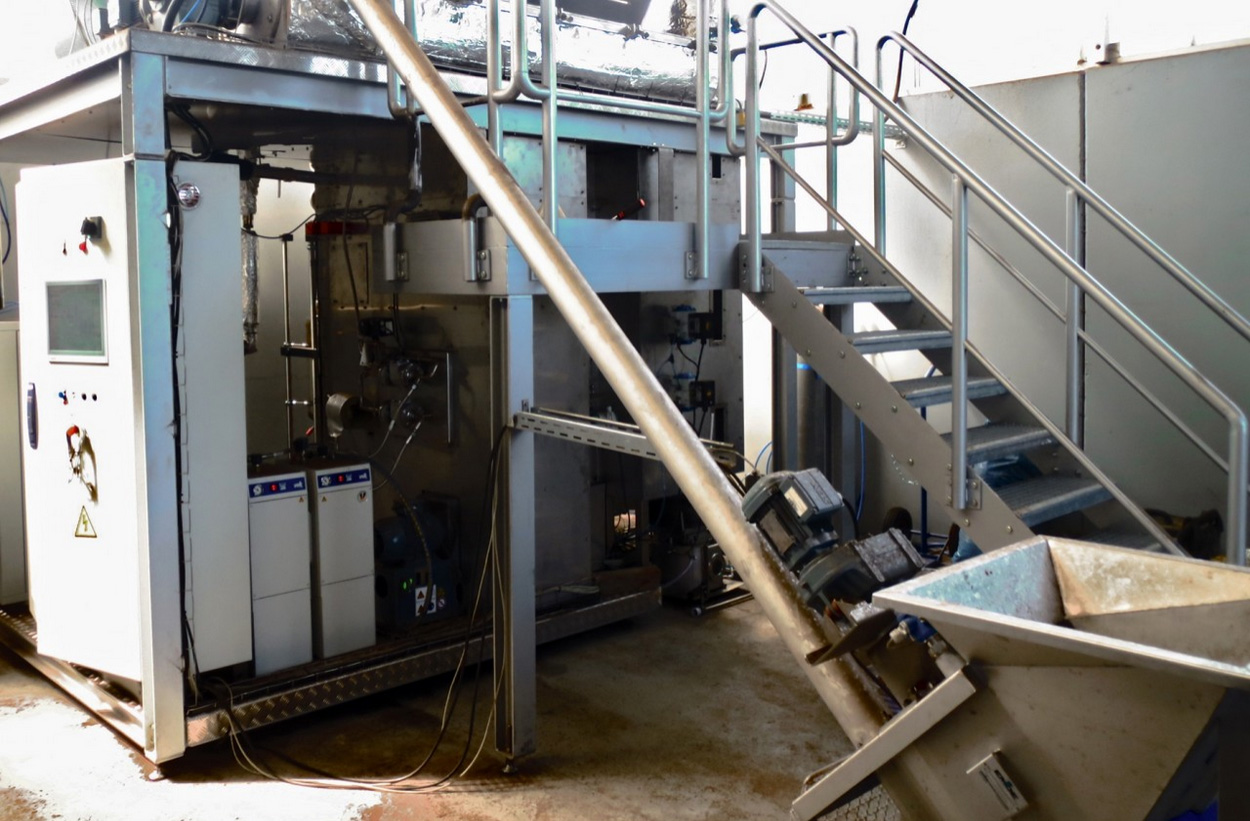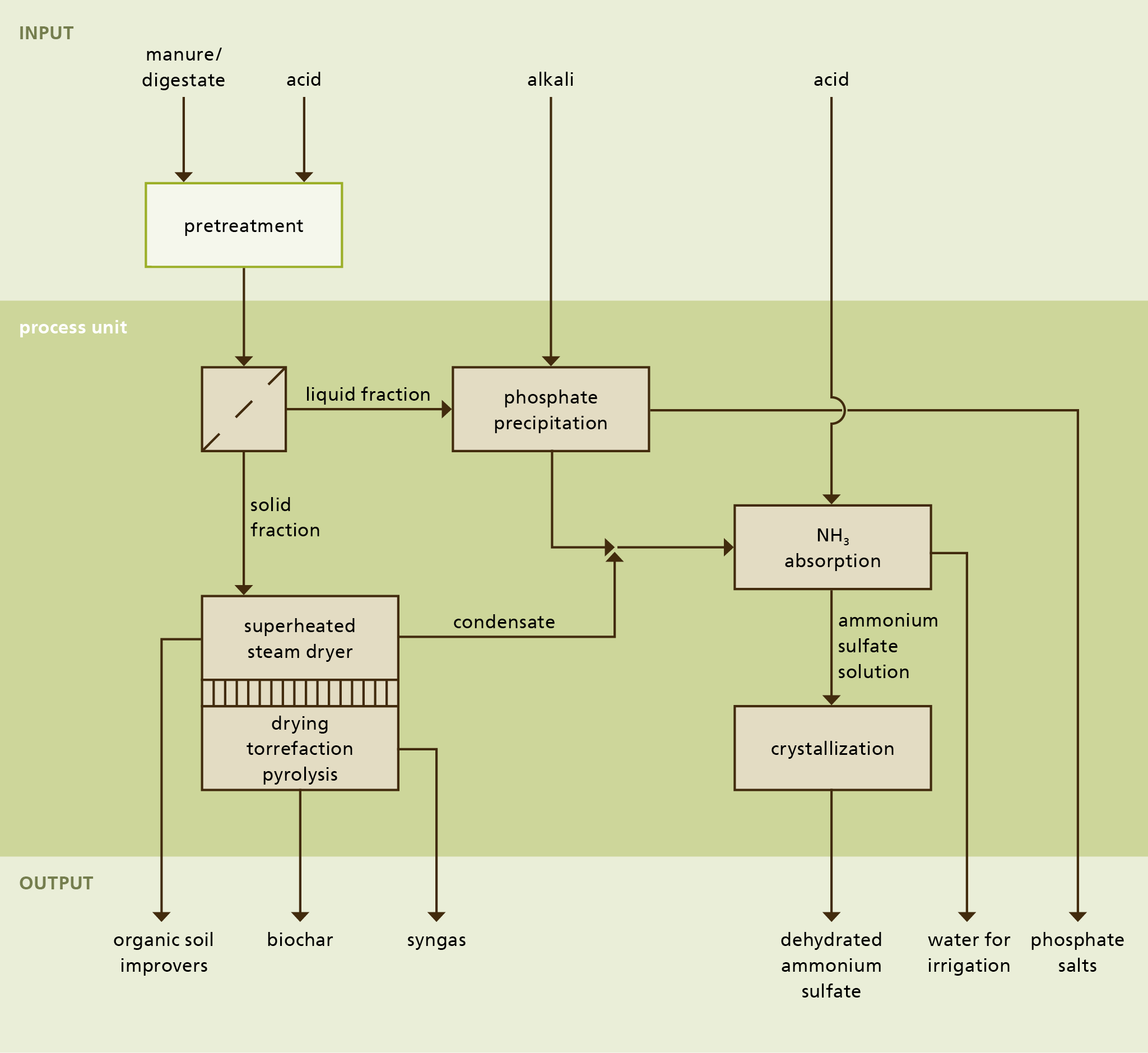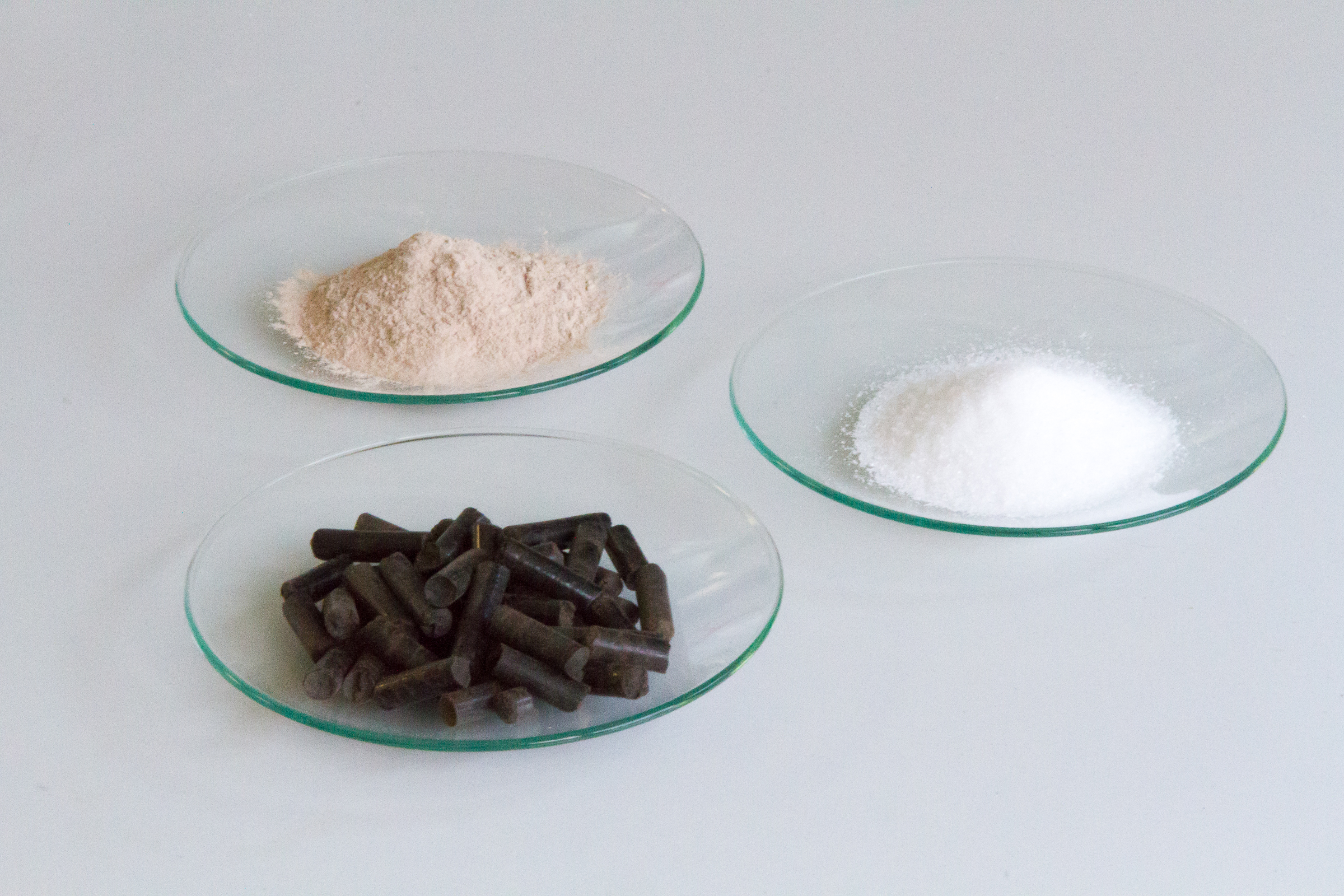For processing, various process steps were integrated as separate modules in one plant. After treatment, all that remains is water that contains only traces of phosphorus and nitrogen, but is rich in potassium - and can be used to irrigate agricultural land.
Pretreatment and solid-liquid separation
In a first step, the aqueous manure is pre-treated so that phosphorus is completely dissolved and separated into a solid and a liquid phase via a multi-stage filtration.
Thermal processes for the treatment of solids
The dewatered solid phase is dried using an energy-efficient process developed at Fraunhofer IGB. The dried organic components can optionally be torrefied with this process at approx. 250 °C or converted to biochar via a pyrolysis step at 450 °C.
Phosphate precipitation and ammonium recovery
The liquid fraction contains the dissolved inorganic nutrients. Phosphorus is first recovered in a reactor and precipitated as calcium phosphate, magnesium phosphate and magnesium ammonium phosphate as crystals and filtered off.
Nitrogen is recovered in a second step. For this purpose, the aqueous fraction is separated as ammonium sulphate by membrane adsorption and crystallised.
 Fraunhofer Institute for Interfacial Engineering and Biotechnology IGB
Fraunhofer Institute for Interfacial Engineering and Biotechnology IGB

